Table of Contents
Introduction:
Asparagus racemosus is a popular medicinal plant found in India’s tropical and subtropical regions. This plant is commonly referred to as ‘Shatavari’, which means ‘who has a hundred husbands or is acceptable to many people’. A. racemosus is a spiny undershrub with many branches and a short tuberous rootstock with several tuberous roots. 1
Numerous recurved spines, small white flowers, sickle-shaped cladodes with scale leaves, and globose berries adorn the stems. This plant is widely grown in India’s tropical and subtropical regions and the Himalayas up to 1,500 metres above sea level. Sri Lanka, Australia, Indonesia, and tropical Africa are also home to this species.1

Nutritional Value of Shatavari:
The nutritional value of Shatavari is as follows:
| Nutritional components | Percentage (%) by mass |
| Crude protein | 7.8 ± 0.2 |
| Carbohydrates | 37.2 ± 0.5 |
| Total fat | < 1 |
| Crude fibre | 28.9 ± 0.4 |
The energy value of Shatavari is 180 kcal/100g.2
Therapeutic Uses of Shatavari:
Some of the therapeutic benefits of Shatavari are listed below:
- The plant has been utilised for therapeutic purposes for millennia, primarily for its recuperative impact on female reproductive organs.
- Ayurveda describes A. racemosus as a potent Rasayana that slows down the ageing process, increases longevity, boosts immunity and mental performance.
- The roots are used in Ayurveda as a stomachic, aphrodisiac, tonic, and bowel astringent. Dysentery, tumours, biliousness, blood and eye disorders, inflammation, rheumatism, and nervous system disorders are all treated with them.
- The roots are used in Unani medicine to cure liver and kidney problems, gleet and gonorrhoea.
- According to the Ayurvedic Pharmacopoeia of India, the tuberous roots are used in gout, lactic problems, puerperal ailments, haematuria, and other therapeutic applications. It’s used as a general tonic and a female reproductive tonic.
- This plant’s root extract is the principal element in the Ayurvedic formulation ‘Satavari mandur’, traditionally used to heal gastric ulcers.1
- Shatavari, a native plant of the Himalayan belt, has been employed as a galactagogue in Ayurveda (Charaka Samhita), and clinical investigations have revealed its potential to cure infertility.3
I recently read an article that suggests the use of Shatavari may aid in proper digestion. Shatavari is known to have antioxidant and anti-inflammatory properties, that may help in regulating the proper digestion process.
Dr. Siddharth Gupta, MD
Benefits of Shatavari (Asparagus):
Benefits of Shatavari as a Female Tonic:
- Women are more likely to be exposed to psychological, physical, and physiological stressors during their reproductive years.4
- Shatavari is regarded as a female tonic in Ayurveda.
- Along with being a rejuvenating herb, it aids in treating female infertility by increasing libido, curing sexual organs’ inflammation and even moistening dry tissues, enhancing folliculogenesis and ovulation, preparing the womb for conception, preventing miscarriages, and acting as a postpartum tonic by increasing lactation, and normalising the uterus and changing hormones.
- It’s also recommended for managing leucorrhoea and menorrhagia.5
Neuroprotective Effects of Shatavari:
- Excitotoxicity and oxidative stress are the main neuronal cell death mechanisms in Alzheimer’s and Parkinson’s disorders.6
- In the Ayurvedic system of medicine, Asparagus racemosus is a well-known nervine tonic.
- Dementia is a symptom of Alzheimer’s disease, one of the most common neurodegenerative disorders.
- Sarsasapogenin, a steroidal saponin found in A. racemosus, has been shown to have potential anti-amyloidogenic characteristics that may slow dementia progression.3
Anti-bacterial & Anti-protozoal Activity of Shatavari:
- In vitro anti-bacterial effect of methanolic extract of roots of Shatavari against Escherichia coli, Shigella dysenteriae, Shigella sonnei, Shigella flexneri, Vibrio cholerae, Salmonella typhi, Salmonella typhimurium, Pseudomonas pectida, Bacillus subtilis, and Staphylococcus aureus was found.
- The growth of Entamoeba histolytica in vitro was inhibited by an aqueous solution of the crude alcoholic extract of the roots.5
Anti-oxidant Activity of Shatavari:
- Shatavari inhibits lipid peroxidation and protein oxidation hence exhibiting anti-oxidant activity.5
- Racemofuran, asparagamine A and racemosol are three anti-oxidants produced by the Shatavari root that protect your body from disease and damage.7
Anti-ulcer Properties of Shatavari:
- The ayurvedic formulation ‘Satavari mandur’ exhibited significant protection against acute gastric ulcers caused due to cold-restraint stress, acetic acid, pylorus ligation, aspirin with pylorus ligation, and cysteamine-induced duodenal.
- The action of the A. racemosus extract on mucosal defence mechanisms may be responsible for healing stomach ulcers.
- Increased stomach emptying time aggravates duodenal ulcers and A. racemosus’ capacity to reduce this gastric emptying time could explain its anti-ulcer activity in the duodenum.1
Benefits of Shatavari as an Adaptogenic Compound:
- Adaptogenic compounds aid any organism in dealing with any sort of stress, whether physical, chemical, or biological.
- Animals exposed to biological, physical, and chemical stress responded positively to an aqueous extract of the whole plant of A. racemosus given orally.
- In rats, chronic, unpredictable, but mild footshock stress-induced disturbances in behaviour (depression), glucose metabolism, suppressed male sexual behaviour, immunosuppression, and cognitive dysfunction are all treated with a herbal formulation containing A. racemosus known as ‘Siotone’.1
Galactogogue Effect of Shatavari:
- A galactogogue is a chemical that improves lactation in humans and animals.
- This is most commonly utilised in the case of secondary lactational failure.
- According to animal studies, an aqueous extract of this plant’s root has been proven to improve the weight of mammary lobulo-alveolar tissue as well as milk yield.1
Benefits of Anti-diarrhoeal Effects of Shatavari:
- According to animal studies, the roots’ ethanol and aqueous extracts have anti-diarrhoeal properties.
- Both gastrointestinal propulsion and fluid secretion were affected by the treatment.
- This extract works by inhibiting prostaglandin production, which restricts gastrointestinal motility and secretion.1
I went through recent studies which indicate that a combination of herbal medications, including Shatavari, may lessen the symptoms of menopause, in keeping with its historical usage as a therapy for female reproductive disorders. A 2018 small-scale study examined the impact of herbal remedies on 117 women’s menopausal symptoms. Women who took Shatavari together with three additional herbs for 12 weeks saw fewer hot flashes and night sweats but no changes in their hormone levels or general health.
Dr. Rajeev Singh, BAMS
How to Use Shatavari?
Shatavari powder is traditionally used by mixing it with room temperature water. Shatavari powder has a sweet and somewhat bitter flavour. If you don’t like the taste, dilute it with milk or juice. You can also use it to make a smoothie.
There isn’t a scientifically determined dosing range. Instead, the dose is determined by your age, weight, health, and other considerations.7
Also Read: Cranberry – Uses, Benefits, Side Effects & Precautions
Side Effects of Shatavari:
Ayurveda considers A. racemosus to be completely safe for long-term use. As per animal studies, no alterations were found in terms of mortality, physiological and biological parameters, bleeding, or necrosis in the tissues. However, according to some animal studies, the following side effects were found:
- Lower doses of an alcoholic extract of the root have positive ionotropic and chronotropic effects on the frog’s heart, but more significant amounts cause cardiac arrest.
- The alcoholic extract had a dilatory impact on the bronchial muscles at higher doses, but it didn’t oppose the histamine-induced bronchoconstriction.1
Also Read: White Asparagus: Nutritional Benefits and Culinary Uses Explored
Precautions to Take With Shatavari:
Pregnancy & Breast-feeding:
There is insufficient evidence to say whether Asparagus racemosus is safe to consume during pregnancy or breastfeeding. Consult a physician to be on the safer side before using it.8
Allergy to onions, leeks, garlic and allied plants:
People allergic to other Liliaceae family members like onions, leeks, garlic and chives may experience an allergic reaction to Asparagus racemosus.8
Also Read: Black Salt – Uses, Benefits, Side Effects & Precautions
Interaction With Other Drugs:
Interaction of Shatavari with diuretics:
Asparagus racemosus has been shown to reduce potassium levels. Diuretics also called ‘water pills’, can also lower potassium levels. When Asparagus racemosus is used with ‘water pills’, potassium levels may become dangerously low.8
Interaction of Shatavari with lithium:
Asparagus racemosus might have a ‘water pill’ effect. Taking Asparagus racemosus may impair the body’s ability to eliminate lithium. This could cause significant side effects by increasing the amount of lithium in the body. Check with your doctor before using this product if you’re on lithium. Your lithium doses might need adjustments.8
Also Read: Chandraprabha Vati – Uses, Benefits, Side Effects & Precautions
Frequently Asked Questions:
1) What are the potential benefits of Shatavari?
Shatavari (Asparagus) has been linked to the treatment and prevention of many other ailments; however, further research is needed for the same.
Shatavari may also help manage conditions like alcohol withdrawal, anxiety, kidney and bladder stones, bronchitis, diabetic neuropathy and diabetes, heartburn, irritable bowel syndrome (IBS), inflammation, problems with memory, and pain.7
2) What are the other common names of Shatavari?
The other common names of this plant in different Indian languages are Shatmuli (Bengali), Satavari (Gujarati); Satavar (Hindi), Wild asparagus (English); Satavari, Satmuli;
Satavari (Malayalam); Asvel, Shatmuli, Satavari (Marathi); Chhotaru, Mohajolo, Sotabori (Oriya); Shatavari (Kannada); Bozidan, Satawar (Punjabi); Satamuli, Satapadi, Shatavari (Sanskrit); Tannirvittan, Nirmittan (Tamil); Pilli gaddalu Ammaikodi (Telegu); Satawar, Satavara, Shaqaqul misri, Satawar (Urdu).1
3) Can we use Shatavari to treat cough?
According to a study in animals, the methanolic extract of the root demonstrated considerable antitussive action. It can be used to get relief from cough in humans, but further studies need to be done.1
4) Where does Shatavari grow?
It can be found in Asia, Australia, and Africa at low altitudes in the shade, and tropical areas. The most frequent species of Asparagus growing in India is A. racemosus, which is utilised in traditional Indian medicine.5
5) Does Shatavari help regulate periods in patients having polycystic ovarian syndrome (PCOS)?
PCOS is a prevalent anovulatory reproductive health disorder that affects 4-12% of women and results in infertility. In clinical trials, Shatavari was very helpful in reducing PCOS and enhancing follicular growth, development, and ovulation. Therefore, it is proposed that PCOS-related infertility could be well treated with an Ayurvedic therapy regimen of Shatavari combined with shatapushpa and guduchi, followed by Rasayana Kalpa, a mixture of Shatavari, guduchi, jatamansi, and amla.4
Also Read: Nagkesar – Uses, Benefits, Side Effects & Precautions
References:
- Singh, R. (2015). Asparagus racemosus: a review on its phytochemical and therapeutic potential. Natural Product Research, 30(17), 1896-1908. doi:10.1080/14786419.2015.1092148.
- Karunarathne, Udulanthi & Arawwawala, Menuka & Amarasinghe, Gunapala & Weerasooriya, T & Samarasinha, U. (2020). Physicochemical, phytochemical, and nutritional profiles of root powder of Asparagus racemosus (Willd) of Sri Lankan origin. 29-35.
- Majumdar, S., Gupta, S., Prajapati, S. K., & Krishnamurthy, S.2021). Neuro-nutraceutical potential of Asparagus racemosus: A review. Neurochemistry International, 145, 105013. doi:10.1016/j.neuint.2021.105013.
- Pandey, A. K., Gupta, A., Tiwari, M., Prasad, S., Pandey, A. N., Yadav, P. K., Chaube, S. K. (2018). Impact of stress on female reproductive health disorders: Possible beneficial effects of shatavari (Asparagus racemosus). Biomedicine & Pharmacotherapy, 103, 46-49. doi:10.1016/j.biopha.2018.04.003
- Alok, S., Jain, S. K., Verma, A., Kumar, M., Mahor, A., & Sabharwal, M. (2013). Plant profile, phytochemistry and pharmacology of Asparagus racemosus (Shatavari): A review. Asian Pacific Journal of Tropical Disease, 3(3), 242-251. https://doi.org/10.1016/S2222-1808(13)60049-3.
- Bopana, N., & Saxena, S. (2007). Asparagus racemosus-Ethnopharmacological evaluation and conservation needs. Journal of Ethnopharmacology, 110(1), 1-15. doi:10.1016/j.jep.2007.01.001.
- Are There Health Benefits of Shatavari Powder? [Internet]. WebMD. 2022 [cited 10 February 2022]. Available from: https://www.webmd.com/vitamins-and-supplements/are-there-health-benefits-of-shatavari-powder.
- ASPARAGUS RACEMOSUS: Overview, Uses, Side Effects, Precautions, Interactions, Dosing and Reviews [Internet]. Webmd.com. 2022 [cited 10 February 2022]. Available from: https://www.webmd.com/vitamins/ai/ingredientmono-1167/asparagus-racemosus.
Also Read: Sarpagandha – Uses, Benefits, Side Effects & Precautions
Disclaimer:
The information provided here is for educational/awareness purposes only and is not intended to be a substitute for medical treatment by a healthcare professional and should not be relied upon to diagnose or treat any medical condition. The reader should consult a registered medical practitioner to determine the appropriateness of the information and before consuming any medication. PharmEasy does not provide any guarantee or warranty (express or implied) regarding the accuracy, adequacy, completeness, legality, reliability or usefulness of the information; and disclaims any liability arising thereof.
Links and product recommendations in the information provided here are advertisements of third-party products available on the website. PharmEasy does not make any representation on the accuracy or suitability of such products/services. Advertisements do not influence the editorial decisions or content. The information in this blog is subject to change without notice. The authors and administrators reserve the right to modify, add, or remove content without notification. It is your responsibility to review this disclaimer regularly for any changes.



 By
By 

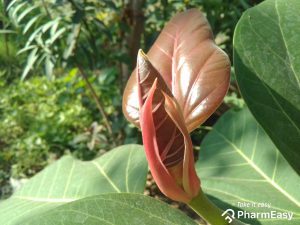
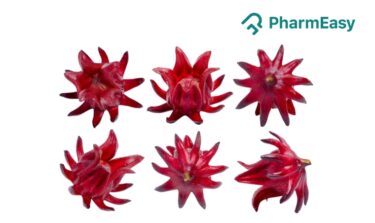
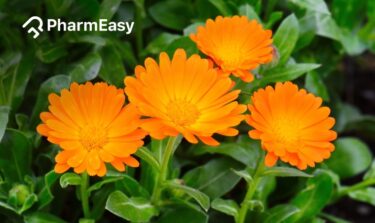
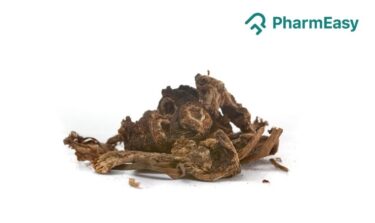
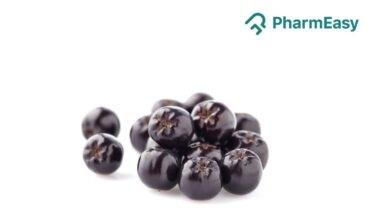

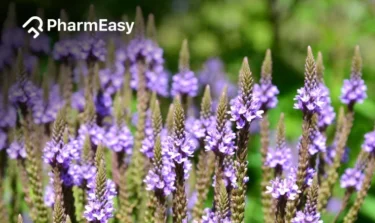

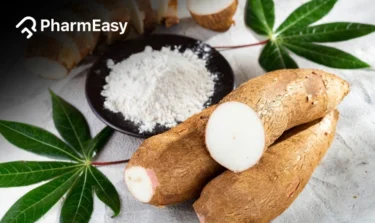
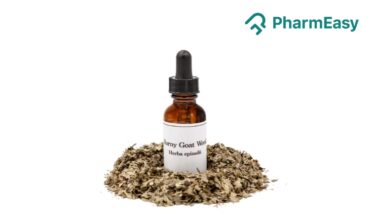
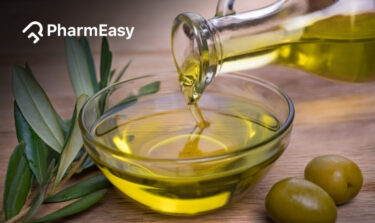




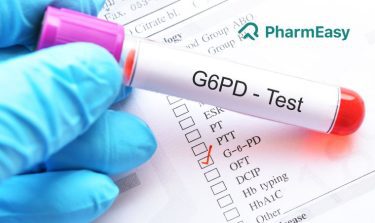



Comments